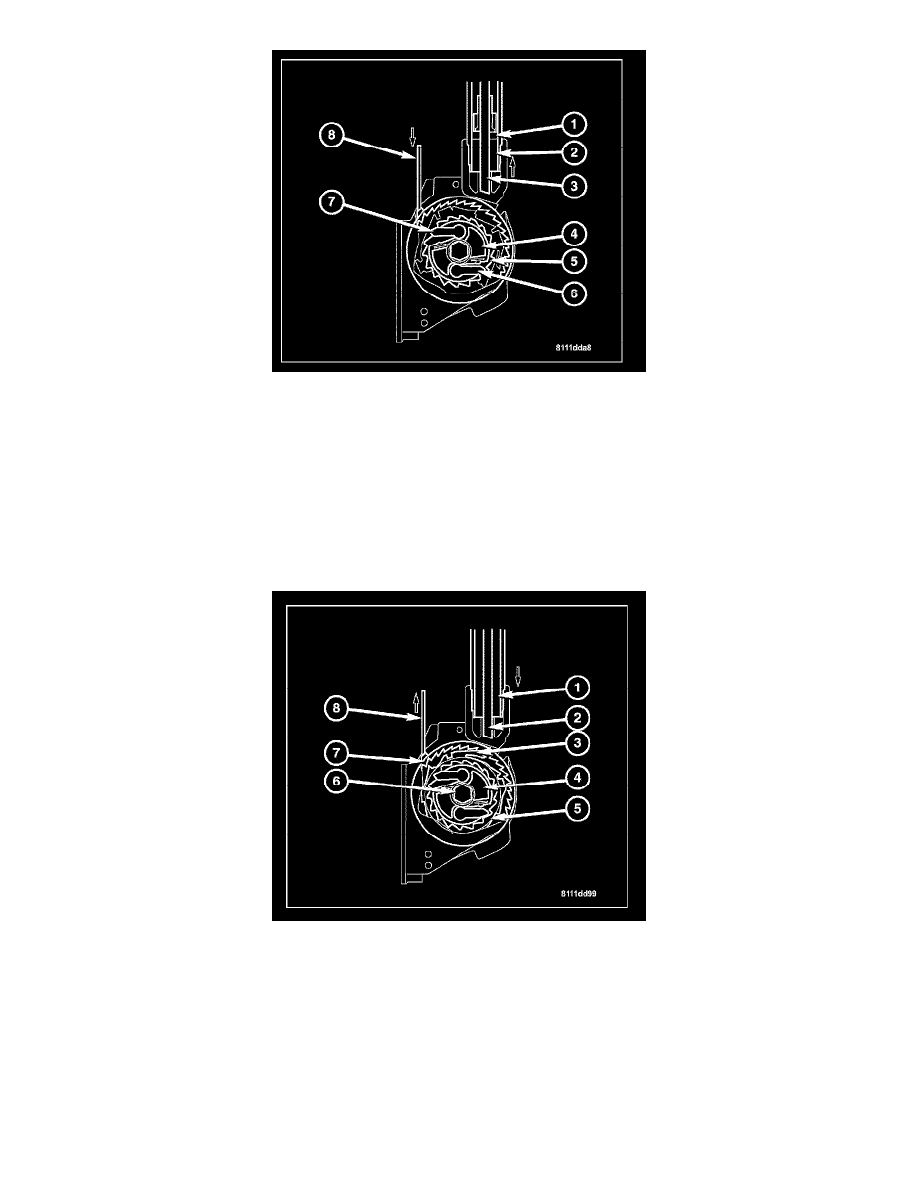Crossfire SRT-6 V6-3.2L SC VIN N (2005)

In the event of a collision, the Occupant Restraint Controller (ORC) puts out an electrical signal for triggering the Seat Belt Tensioner (SBT) after a
certain delay.
The Squib in the gas generator is triggered and the resulting combustion gas moves the piston (2) in the gas generator cylinder (3) up at high speed. The
pull cable (4) connected to the piston is tensioned causing the cable pulley (5) to turn. Inertia and centrifugal force cause the pawls (7) in the cable pulley
(5) to engage in the teeth in the toothed ring (6).
A positive connection is then present between the gas generator piston and the seat belt retractor shaft via the pull cable (4), the cable pulley (5) and
toothed plate pulling and thereby tensioning the seat belt (1).
FORCE LIMITATION
After tensioning the seat belt, the gas pressure in the gas generator cylinder (1) decreases. The pull cable (2) is relieved and the force on the cable pulley
(4) reduced.
The force exerted by the passenger on the seat belt then changes the direction of pull and the seat belt (8) attempts to unwind. This is prevented by the
outer locking pawls (3) in the toothed ring (5). The change in the direction of pull simultaneously causes a
change in the direction of rotation of the retractor shaft. Inertia and centrifugal force cause the outer locking pawls (3) on the toothed ring (5) to engage
in the inner teeth on the locking ring (7).
As soon as a locking pawl (3) is in contact with the teeth on the locking ring (7) the latter turns until it locks up. The arrested locking ring (7) causes the
torsion rod (6) to arrest on one side. The torsion rod (6) forms the heart of the retractor shaft and therefore takes up the tension forces acting on the seat
belt.
